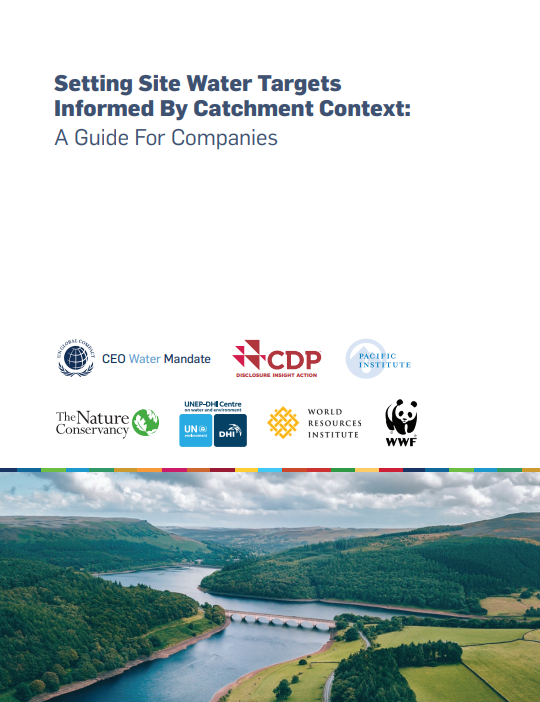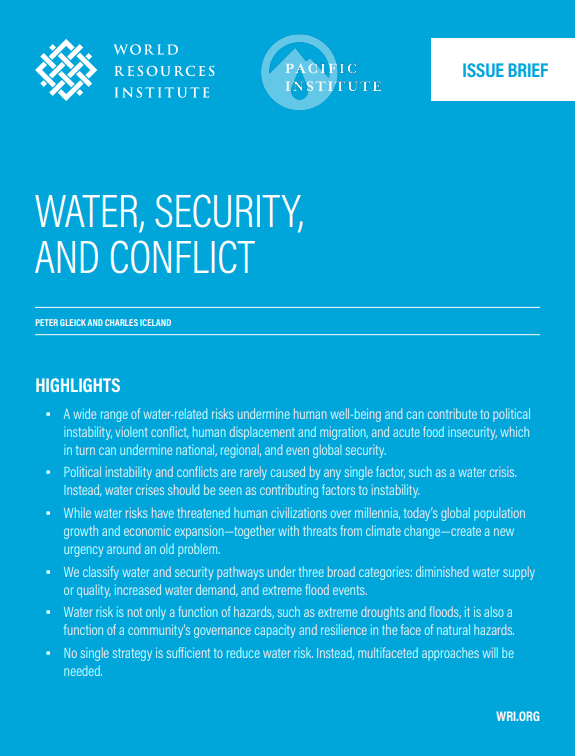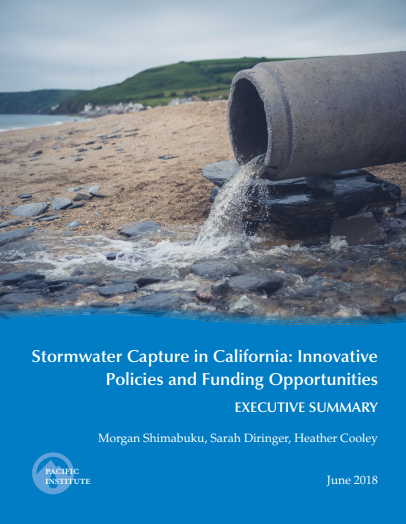1430 Resources

Collective Action on Water – To What End?
September 24, 2013 | post
The United Nations has designated 2013 as the International Year of Water Cooperation, which highlights the critical importance of cross-sectoral collaboration in promoting sustainable water management.
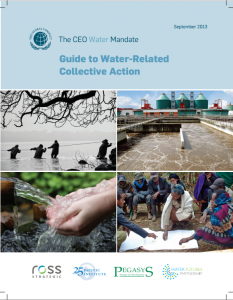
Guide to Water-Related Collective Action
September 16, 2013 | publication
Effective collective action is the key to approaching shared water risk successfully. The UN Global Compact’s CEO Water Mandate initiative — which the Pacific Institute is co-secretariat for — released this guide in 2013 in order to provide a step-by-step guide to water resource-related collective action.



Pricing Practices in the Electricity Sector to Promote Conservation and Efficiency: Lessons for the Water Sector
September 11, 2013 | publication
Energy and water utilities face fiscal challenges related to declining per-capita demand, as well as mandates for continued reductions in consumption. This study examines a range of electricity pricing practices and policies that California electric utilities have used to remain financially stable as per-capita demand decreased.
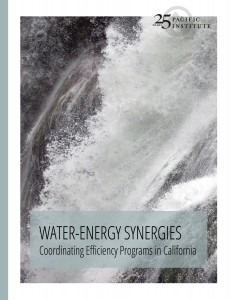
Water-Energy Synergies: Coordinating Efficiency Programs in California
September 5, 2013 | publication
All forms of energy, from hydropower to solar panels, use water. Likewise, water supply, treatment, use, and disposal all use considerable amounts of energy. Coordinating water-energy efficiency efforts provides a significant opportunity to achieve greater savings for both water and energy utilities and for their customers.

AT&T Tool Kit Uncovers Billions of Gallons of Potential Water Savings in Cooling Systems
September 4, 2013 | post
Coming from a telecommunications company and attending a conference entitled Water Cooperation – Building Partnerships, I find this an appropriate quote with which to open.

Many Agricultural Water Districts Fail to Submit Required Water Management Plans: Laggards Can Learn from Leaders
September 3, 2013 | post
A few years ago, the California Legislature passed the Water Conservation Act of 2009, which among other things, required large agricultural water providers to begin preparing agricultural water management plans (as urban water providers have done for over a decade).

WRI Insights: Managing the Earth from Space: Satellite and Sensing Technology in Water Management
August 29, 2013 | post
Andrew Maddocks of the World Resources Institute shares his WRI blog previewing the Stockholm World Water Week session “The Use of New Spatial Information Products for Improved Water Management and Risk Mapping.”
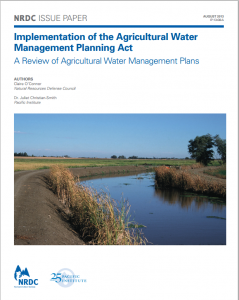
Implementation of the Agricultural Water Management Planning Act: A Review of Agricultural Water Management Plans
August 29, 2013 | publication
Twenty-four of California’s agricultural water districts have submitted agricultural water management plans, leaving 55 districts out of compliance with the requirement of the Water Conservation Act of 2009, according to a new joint analysis issued today by the Natural Resources Defense Council and the Pacific Institute. This represents a 30% compliance rate, meaning there is much work to be done to ensure sustainable water management for the state.

Hundreds of Thousands May Not Have Affordable Access to Safe Drinking Water in California
August 28, 2013 | post
In 2012, California made history by being the first U.S. state to legally acknowledge a human right to water. Yet, what does it mean, in practice, to ensure that all Californians have access to safe drinking water?
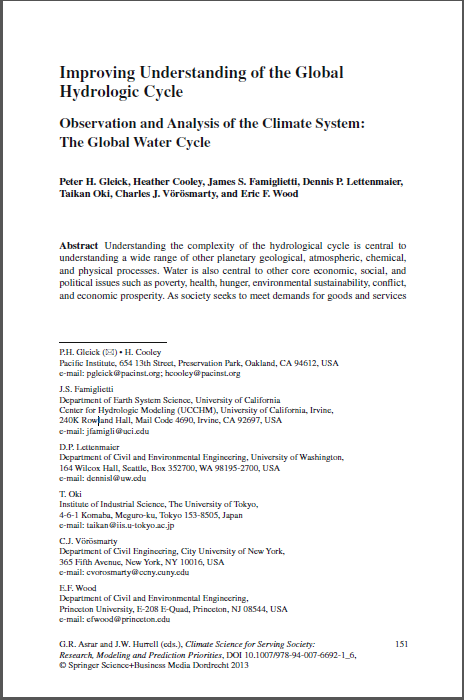
Improving Understanding of the Global Hydrologic Cycle: Observation and Analysis of the Climate System: The Global Water Cycle
August 26, 2013 | publication
As society seeks to meet demands for goods and services for a growing population, it is important to improve understanding of the fundamental science of the hydrological cycle, its links with related global processes, and the role it plays in ecological and societal well-being.

Aligning Two Worlds: Business and the Human Right to Water and Sanitation
August 21, 2013 | post
Available, Affordable, Accessible, Acceptable, and Safe – the cornerstones of the human right to water and sanitation were codified in California in 2012 with the adoption of Assembly Bill 685.

National Geographic ScienceBlogs: Peak Water in the American West
August 20, 2013 | post
It is no surprise, of course, that the western United States is dry. The entire history of the West can be told (and has been, in great books like Cadillac...

Why Water Managers Should Embrace Social Media
August 19, 2013 | post
Facebook, Twitter, LinkedIn, Instagram, Pinterest. I don’t need to explain what social media is because chances are you’re plugged into one, if not most, of these social media platforms.

Water Rates: Conservation and Revenue Stability – Issue Brief
August 14, 2013 | publication
Supplying water to customers is a business. As in any business, water sales revenues need to be accurately forecasted and balanced against current and long-term future water supply and treatment costs.

Assessing Water Affordability: A Pilot Study in Two Regions of California
August 14, 2013 | publication
A pilot study in California showed that many households, even within affluent communities, routinely spent over the affordability threshold of two percent of their household income on their water bill. The number of water systems with “unaffordable” rates varied by region and measure used, with important implications for policymakers.

Where Have We Reached on Our WASH Models Journey and What Impacts Have They Made?
August 13, 2013 | post



More Comprehensive and Coordinated Global Effort Needed to Meet Global Water Challenges
August 1, 2013 | post

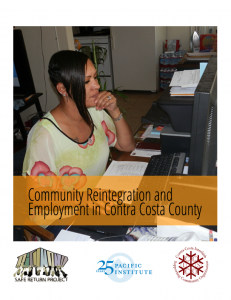
Community Reintegration and Employment in Contra Costa County
July 30, 2013 | publication
The Safe Return Project - a participatory action research process in Richmond, California involving formerly incarcerated residents in carrying out research and organizing to increase opportunities for community reintegration...

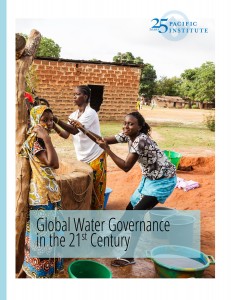
Global Water Governance in the 21st Century
July 24, 2013 | publication
Growing pressure on global water resources is having major impacts on our social, economic, and environmental well-being.
Page 43 of 58



